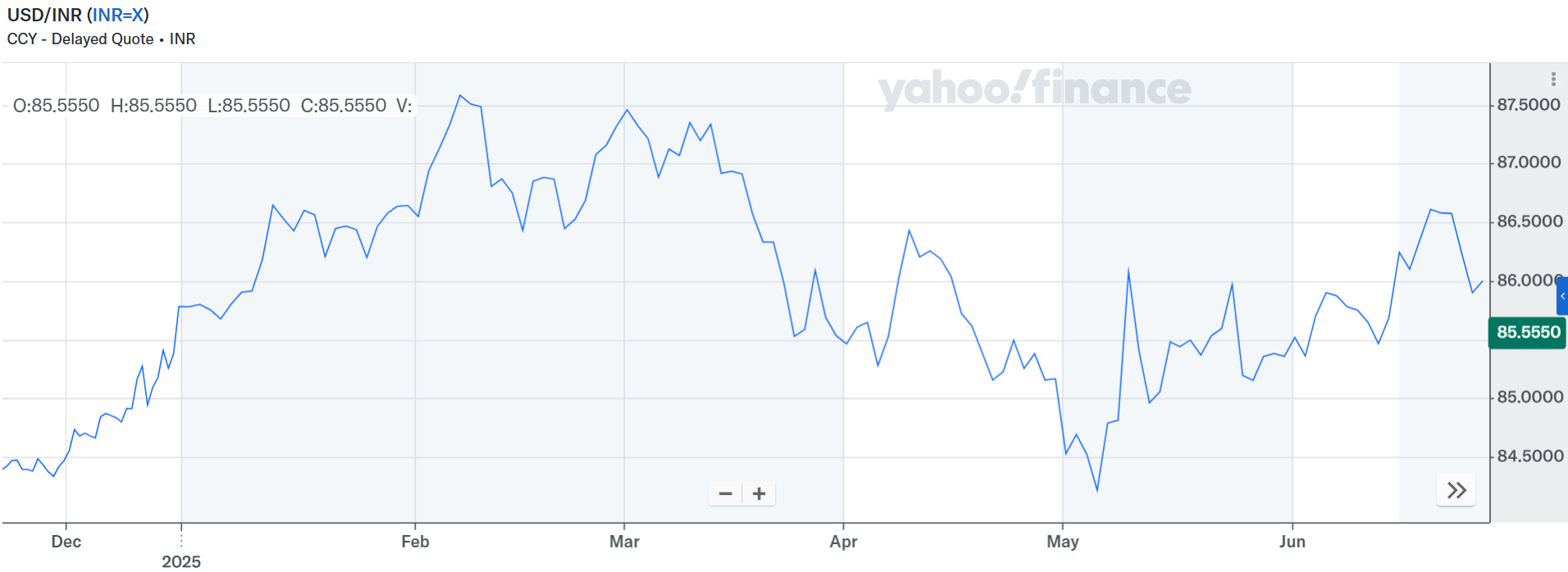
Source: Yahoo Finance
A stronger rupee is beneficial when the dollar is weak.
At the end of June, the Indian currency strengthened slightly to 85.54 rupees per dollar, representing a daily appreciation of 0.2%.* This is a result of the weakening US dollar facing increased uncertainty about broader problematic trade and foreign policies under the Trump administration. Additionally, speculations that US President Donald Trump may appoint a new Fed chair who is more accommodating towards lower interest rates before the end of his term have raised expectations of an earlier interest rate cut.
The dollar is experiencing one of the worst first halves of a year in the history of the floating exchange rate system, with the dollar index falling by more than 10% since the beginning of the year.* The weakening dollar benefits many emerging economies, including India. However, foreign and state banks are buying U.S. dollars and are preventing the Indian currency from strengthening significantly.
Growth in service exports and record remittances
One of the most positive signals from the Indian economy comes from the current account. In the January to March 2025 period, India achieved a current account surplus of $13.5 billion, representing 1.3% of GDP, which marks the first surplus in four quarters. A key factor in this outcome was the growth in service exports, which increased from $43 billion to $53 billion on a yearly basis.
Another significant contribution came from remittances by Indians working abroad, which reached a record high of $123 billion for the whole of the fiscal year. In the last quarter alone, they reached $34 billion. These income flows directly increase disposable household income and support domestic consumption.
Initial public offerings and financial flows
Investors have also focused their attention on financial flows, particularly in connection with large IPOs. One example is the $1.5 billion IPO of HDB Financial Services, demand for which was almost double. The inflow of foreign exchange from this and similar IPOs has stimulated movement in the foreign exchange market and affected swap rates.
What risks are there?
Despite a favorable quarter, the annual current account deficit for the 2024/25 fiscal year remains at $23.3 billion (0.6% of GDP), which is only a slight improvement on the previous year. The biggest risks for the future are still global trade tensions and developments in merchandise trade. The merchandise trade deficit reached USD 59.5 billion, deepening year on year.
However, the overall balance of payments was minus $5 billion, mainly due to weaker inflows of foreign direct investment and portfolio flows. Analysts point out that financial flows will be a key factor in determining future developments, given that the current account is currently at a sustainable level.
* Past performance is no guarantee of future results.




.jpg)
.jpg)


